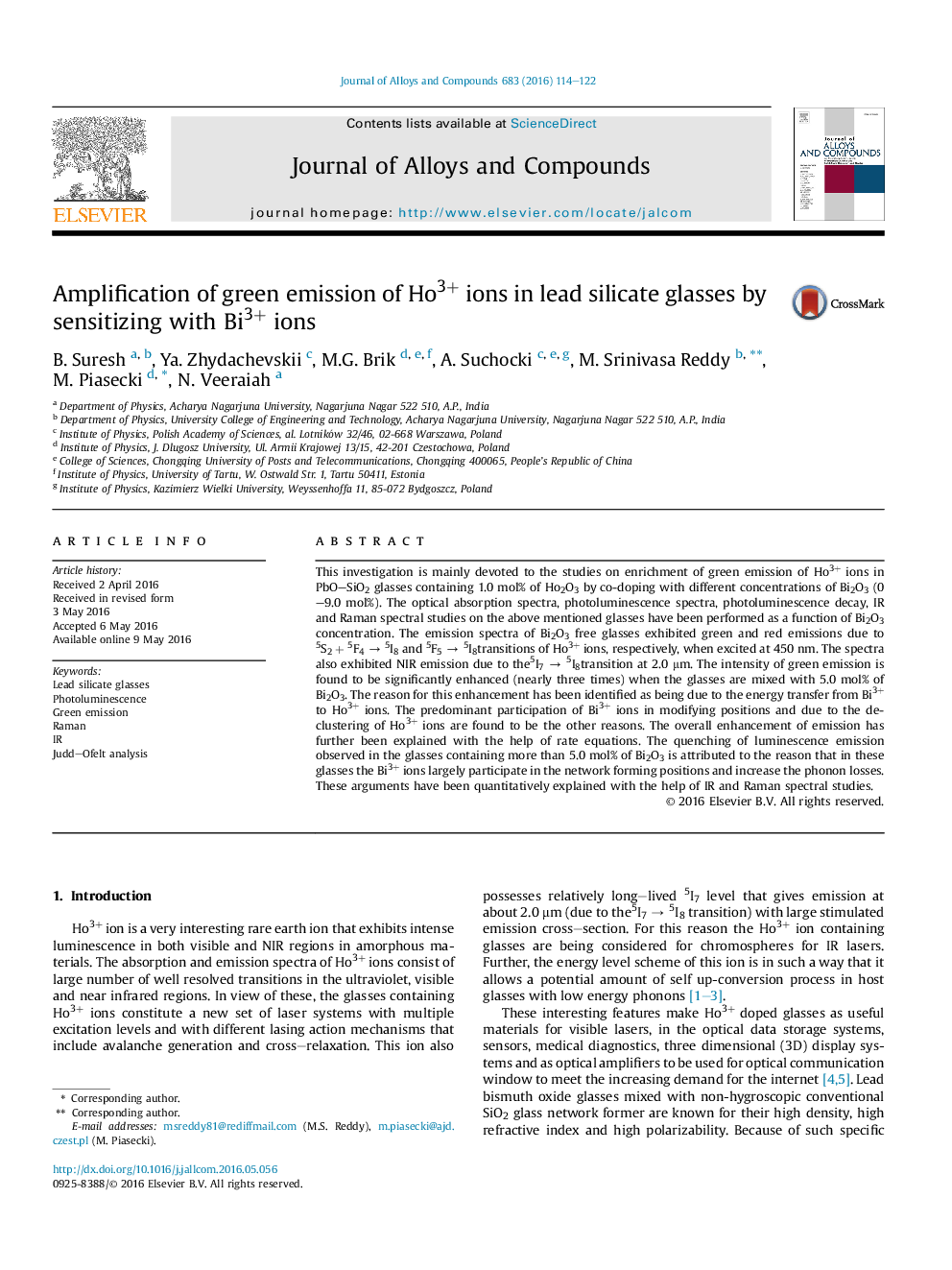| Article ID | Journal | Published Year | Pages | File Type |
|---|---|---|---|---|
| 1605446 | Journal of Alloys and Compounds | 2016 | 9 Pages |
•Green emission of Ho3+ ions enriched in PbOSiO2 glasses when co-doped with Bi3+ ions.•Optical absorption and emission spectra are characterized using Judd–Ofelt theory.•The energy transfer mechanism is discussed quantitatively with the rate equations.•5.0 mol% of Bi2O3 is optimal concentration for the highest luminescence efficiency.
This investigation is mainly devoted to the studies on enrichment of green emission of Ho3+ ions in PbOSiO2 glasses containing 1.0 mol% of Ho2O3 by co-doping with different concentrations of Bi2O3 (0–9.0 mol%). The optical absorption spectra, photoluminescence spectra, photoluminescence decay, IR and Raman spectral studies on the above mentioned glasses have been performed as a function of Bi2O3 concentration. The emission spectra of Bi2O3 free glasses exhibited green and red emissions due to 5S2 + 5F4 → 5I8 and 5F5 → 5I8transitions of Ho3+ ions, respectively, when excited at 450 nm. The spectra also exhibited NIR emission due to the5I7 → 5I8transition at 2.0 μm. The intensity of green emission is found to be significantly enhanced (nearly three times) when the glasses are mixed with 5.0 mol% of Bi2O3. The reason for this enhancement has been identified as being due to the energy transfer from Bi3+ to Ho3+ ions. The predominant participation of Bi3+ ions in modifying positions and due to the de-clustering of Ho3+ ions are found to be the other reasons. The overall enhancement of emission has further been explained with the help of rate equations. The quenching of luminescence emission observed in the glasses containing more than 5.0 mol% of Bi2O3 is attributed to the reason that in these glasses the Bi3+ ions largely participate in the network forming positions and increase the phonon losses. These arguments have been quantitatively explained with the help of IR and Raman spectral studies.
Graphical abstractEnergy level diagram containing important transitions of Ho3+ and Bi3+ ions in lead silicate glasses mixed with 5.0 mol% of Bi2O3.Figure optionsDownload full-size imageDownload as PowerPoint slide
